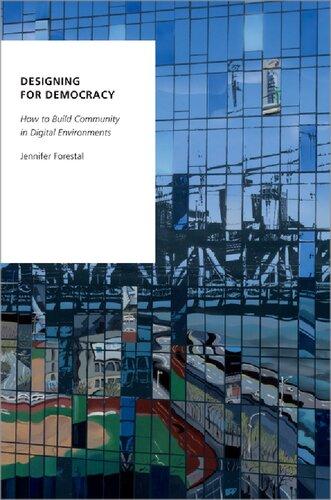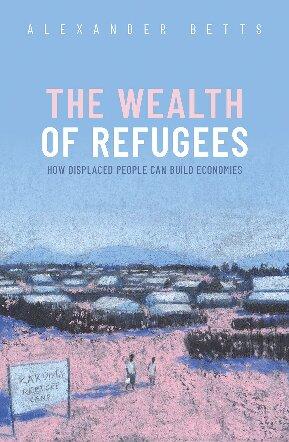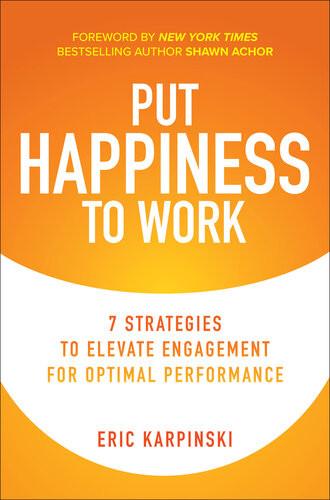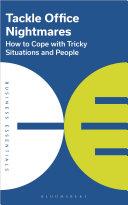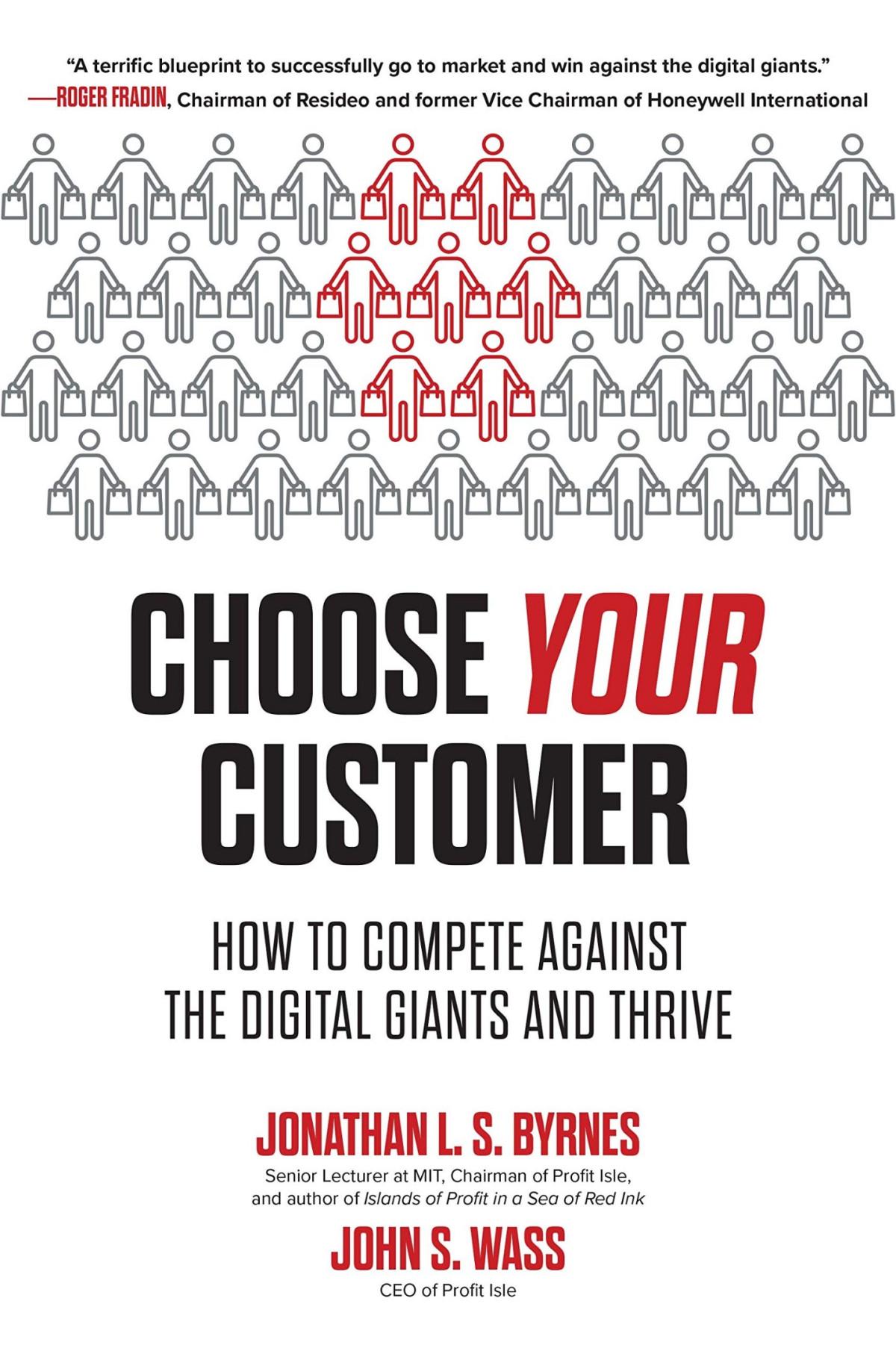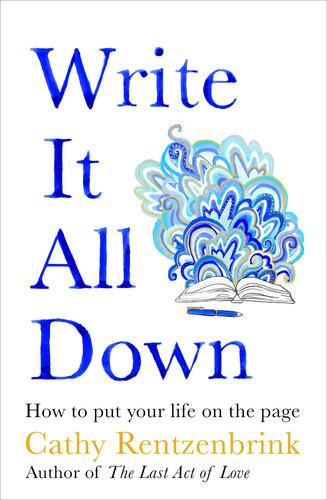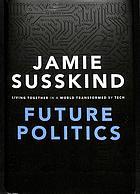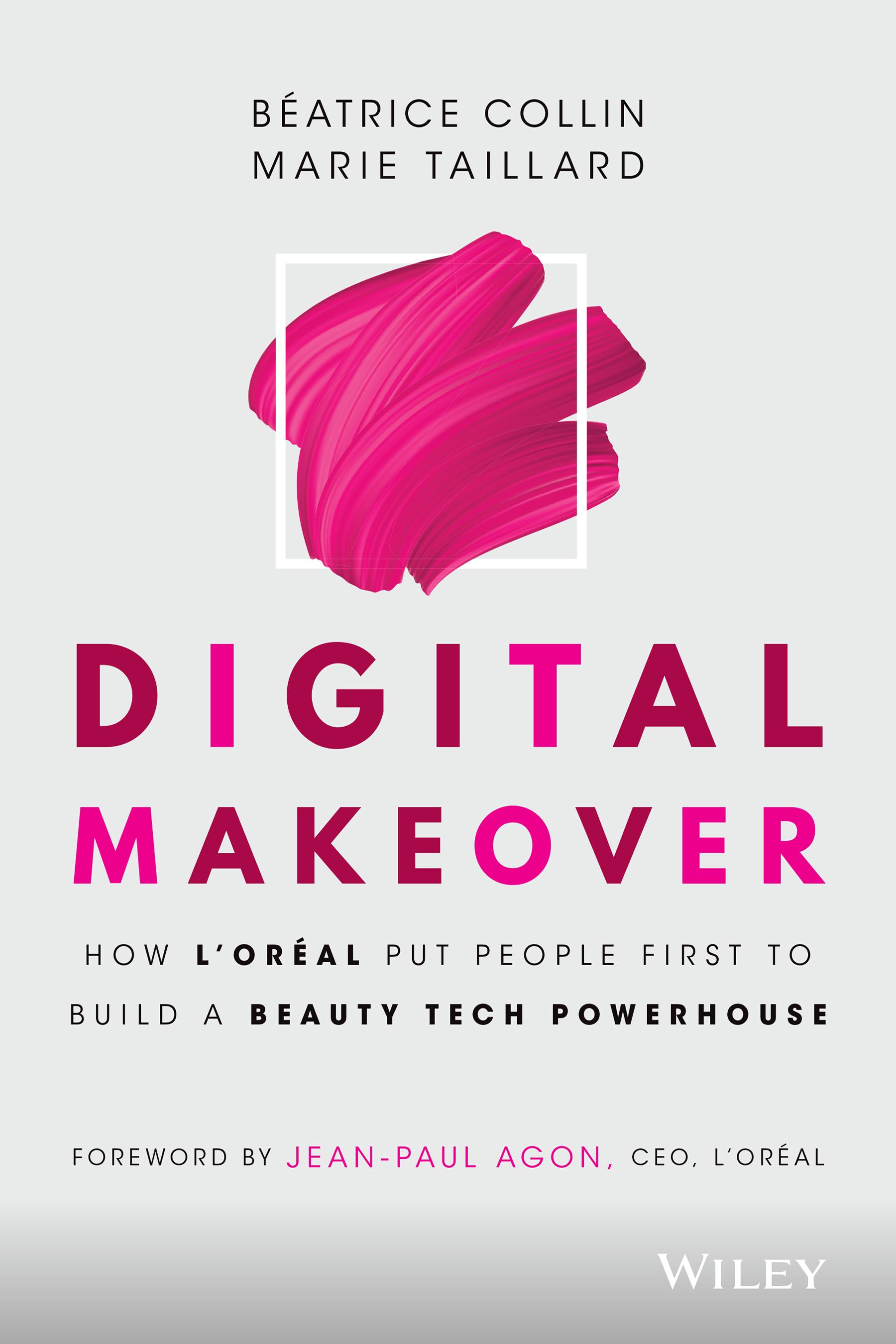Foreword: Permanent Reinvention in the Genes
Over the last ten years, the pace and intensity of change have increased like never before. Everywhere, the world has been transformed at dizzying speeds. And as I write this preface, the current COVID-19 crisis is further accelerating these massive shifts, especially those related to digital.
With advances in science and technology, the digital tsunami that has seeped into all spheres of life, and the environmental and societal changes, we’re experiencing a veritable Big Bang that has shattered our landmarks. From consumer behavior to marketing, distribution, and competition, a new world has emerged:
◼ A world whose only permanence has become movement
◼ A world that is volatile, uncertain, complex, and even more demanding
◼ A world where metamorphosis has become vital for companies
This unprecedented situation is undoubtedly the biggest upheaval of my entire career.
In more than forty years at L’Oréal, I thought I had already been exposed to the greatest shocks: I had been appointed head of our Asia zone one month before the Asian crisis of 1997, and head of North America a few days before September 11, 2001. And when I took over as Group CEO in 2006, I was almost immediately confronted with the crisis of 2008, which has been, in the end, an opportunity to redefine the company’s major fundamentals:
◼ Its mission: beauty for all
◼ Its strategy: universalization (i.e. globalization) while respecting differences
◼ Its self-renewed objective: the conquest of a billion additional consumers
But a redefinition was no longer sufficient after the titanic changes of the last few years. They required a revolution, a full “reset” of our hard drive.
We’ve carried out our “revolutions” on three fronts, almost simultaneously:
◼ The digital revolution, which started in 2010, is widely described in this book so I will spare the fine details here. The COVID crisis has only deepened and quickened the digital wave. Everywhere, e-commerce is exploding. It will be the big winner from the crisis, as many consumers have experienced the convenience of purchasing online and will not go back. Its potential is immense and global. Thanks to online commerce that facilitates the delivery of products to even the most remote areas, the democratization of beauty will boost the market for many years to come. Additionally, consumers are developing stronger relationships with their favorite brands thanks to the internet and social networks. Today, on top of the digital revolution, winning the battle of Beauty Tech is vital. Our ambition is to be the undisputed world leader in Beauty Tech. This is the mission of the next few years, the one that will, once again, give us the edge over our competitors.
◼ The sustainable revolution launched in 2013 with our Sharing Beauty With All program. Since then, we have fundamentally shifted our paradigm, revolutionized our business model, and reinvented our approach in all areas of the company. We added sustainability as a criterion in product design, alongside quality and profitability. We have rethought procurement and production with new processes to reduce our footprint. We have largely “decarbonized” our production and proved that it is possible to decouple economic growth and environmental impact. For all of us, the pandemic crisis is a wake-up call to rebuild a greener economy with greater solidarity and cohesion. The environmental and social emergency is such that if we do not act, we will forsake our own future. This is why last June we launched our new L’Oréal for the Future program, with which we are committing to a new sustainable and inclusive revolution. The two are inseparable.
◼ Finally, we have been carrying out a cultural and managerial revolution that started in 2016. We are committed to our Simplicity program to transform the way we work and respond to the new expectations and aspirations of our employees. We’re improving our daily working experience through better meetings, increased cooperation, cross-functionality, and a culture of constructive feedback. This leads to renewed relationships with work and management.
Each of these revolutions has helped us navigate the company through the great ruptures and shifts of the twenty-first century. What makes each of these revolutions so successful? First and foremost, L’Oréal’s ability to reinvent itself.
For me, one of the strengths of this book is that it seeks to find, within the L’Oréal cultural genome, the springs of its continual adaptation, its agility, and its responsiveness. This is also the reason why I wanted to preface it.
Because the history of L’Oréal is one of constant reinvention. This capacity to reinvent ourselves is part of our genetic map. Generation after generation, our company has always known how to transform itself, to adapt, while remaining faithful to our founding principles and identity.
It is this permanent contrast that produces the originality of our business and cultural model. This “simultaneity,” where long-term vision meets short-term pragmatism, helps create a group that is strategic in its course, mission, and objectives while pragmatic in its tactics and approach.
Central to L’Oréal’s culture of consistent renewal are our extraordinary teams. Our employees combine unparalleled commitment and a constant pursuit of excellence with the ability to permanently reinvent themselves.
Each of L’Oréal’s five chairmen in 110 years has had to face major upheavals to their environment and seize the opportunities they offered. Every leader has shown an obsessive desire to transform the company into each “new world.”
Eugène Schueller initiated the scientific and industrial adventure at the beginning of the twentieth century. François Dalle led the “thirty glorious years” in France and Europe and the birth of mass distribution. Charles Zviak championed scientific and research innovation. Lindsay Owen-Jones piloted globalization. And I helped usher in the transformations at the dawn of the twenty-first century: the rise of China and Asia, the digital revolution, and the advent of social and environmental responsibility.
Permanent transformation is, for me, the only compass in our modern world, a world with chronic volatility and uncertainty that makes it more demanding but also incredibly stimulating. By following this compass, L’Oréal has been able to achieve sustainable growth for more than 110 years without ever denying its past.
This ability to reinvent itself has, in my opinion, become the true performance criterion for companies, if not the means of survival.
I have always sought to maintain this “L’Oréalian” culture of challenging the “status quo,” which I have borne for the last fifteen years. And when I look to the future, I am extremely confident.
Confident because beauty is a universal human aspiration that will continue to drive the cosmetics market.
Confident also because L’Oréal is perfectly equipped to be the beauty champion of the future; beauty enhanced by technology and digital capabilities; beauty that is responsible, sustainable, and natural, based on the new green sciences that our laboratories are inventing; and finally, beauty that is diverse and inclusive, adapted to everyone’s needs and expectations.
Mirroring this beauty of the future, L’Oréal’s new collective adventure will be to invent the company of the future, in the decade 2020–2030:
◼ A company that is ever more tech and digital—intelligent, agile, connected—where cloud, data, and artificial intelligence will be at the service of “augmented” employees and consumers.
◼ An exemplary company in terms of responsibility and sustainability, motivated by the new L’Oréal for the Future commitments we made this year.
◼ And finally, a company where, more than ever, people remain at the heart of everything, and where values, ethics, inclusivity, diversity, development, social protection, and human rights will remain absolute priorities.
Jean-Paul Agon L'Oréal CEO
Introduction: Building a Beauty Powerhouse
Early in 2010, L’Oréal CEO Jean-Paul Agon, a company lifer with a friendly, easygoing disposition, began experiencing a feeling of premonition, one that had become familiar to him throughout his executive career. Experience told him he should trust this sense that something dramatic was about to take place and that he needed to get ahead of it. Bits of ideas gleaned in informal chats with well-informed friends and in his travels, meeting other leaders, economists, politicians, academics, and media types, were starting to create a picture in his mind of something big that was about to change the course of industry.
In a matter of just a few weeks, the image sharpened: a wave of digital technology that had already transformed many aspects of daily life and business was about to surge with such disruptive intensity that it would transform entire industries and threaten the survival of companies that did not ready themselves in time for its assault. Agon was the night watchman who could sound the alarm. He knew that the future of his century-old company was at stake, and he needed to inspire his colleagues to take action and drive the transformation before the wave overwhelmed them. A charismatic CEO with a sterling record, Agon knew he could count on his senior leadership team to listen and respond. He was far from clear on the actions they should take, but the alarm needed sounding, loud and commanding, now.
To stir his troops to action, Agon resorted to a jarring and violent metaphor. He began predicting the arrival of a digital tsunami. First internally, to his executive committee, then more publicly, he took to forecasting that the relatively peaceful waters of the cosmetics industry were about to be dramatically agitated by a massive tidal wave. He referred to the digital disruption that had begun to shake many sectors and industries, turning market leaders into insignificant players and small entrants into powerhouses overnight. The disruption was about to hit the tranquil shores of the beauty sector, a $500-billion global industry that had, until then, remained relatively unscathed, dominated as it was by a handful of long-established and successful multinational
players—Europeans such as L’Oréal and Unilever, Americans such as Procter & Gamble and Estée Lauder, and the Japanese Shiseido.
Most executives, including Agon, had seen the initial technological wave unfurl over the course of their careers: firms had integrated information technology into their operations and were communicating effectively with consumers who used the internet in their daily lives for everything from obtaining information about products they wanted to buy to sending e-mails and posting pictures on social networks. What many businesses across sectors, including cosmetics manufacturers, had failed to recognize was that this first wave had triggered a much more powerful cataclysm that would encompass far more than technology and would in fact transform everything from consumer behavior to the way companies are managed and even which companies would survive. Agon’s premonition was right on the mark, auguring a deep and broad upheaval in the sector. He succeeded in rallying his troops to launch L’Oréal’s response to the disruption, a dramatic transformation that allowed the company to position itself ahead of the incoming wave. It is this roughly ten-year transformation that Digital Makeover: How L’Oréal Put People First to Build a Beauty Tech Powerhouse explores. Our investigation dives into the breadth and the depth of the disruptive wave, looking not only at the companies and brands that produce beauty products but beyond them, to the way the disruption engulfs consumers of beauty products; influencers such as celebrities, actors, models, journalists, and other opinion leaders whose conversations fuel the demand for these products; value chain partners both upstream and downstream; and, finally, the very core notion of beauty in the minds, practices, and looks of consumers around the world.
The disruption caused by information and digital technology over the course of the past forty years has been broad and multidimensional. Its business dimensions, while enormous, are but one aspect of the overall phenomenon: the deeper sociological, political, and economic ramifications are immense and still being played out at the global, regional, and national levels. The full scope of the disruptive potential was identified and understood early by the most focused and astute observers, many of whom used this advance knowledge very legitimately to build or transform businesses and diffuse generally useful information. Others, having devised less benevolent uses of digital information and digital channels, whether for political or economic reasons, have contributed to the destabilization of the post–Cold War world order. The ability to use
digital channels to spread disinformation and further political agendas is an important factor in the rise of populism and poses a significant threat to democracy. The remarkable effectiveness of positive as well as nefarious applications serves to emphasize and remind us of the potential disruptive power of digital technologies.
From Disruption to Transformative Action
The very notion of a market has been disrupted by the availability of information and the disintermediation of many transactions. This has reversed the traditional power dynamics between sellers and buyers. To take the familiar case of consumer goods, consumers now have much more control over their relationship with brands and their purchasing process as they benefit from far greater access to information about the brands and products they select. At the level of individual firms, the incoming wave has been tackled in very different ways. Some leaders, Agon among them, sensed the wave’s early signals, understood the power of the disruption as well as the opportunities and challenges it carried with it, and responded by launching a corporate digital transformation early on. Others were less heedful. The retail sector has been particularly disrupted and provides countless examples of bankrupt brands whose failed attempts at transformation were too late or too cautious. Across sectors and companies, disruption remains a survival challenge.
At the personal level, digital disruption has been just as real, and many of us have had to engineer our own digital transformations, in either our professional lives or our personal lives. Take our own digital disruption. We are both business school professors with decades of teaching experience. As educators, we have had to gradually rethink the way we teach. Twenty years ago, we adopted PowerPoint slides as a teaching support. Later, as it became clear that much of the content we had been teaching was readily accessible online, we refocused on guiding students to develop skills and mindsets rather than on delivering content.
More recently, we allowed our students to use devices in class for notetaking and to check out brands, people, and concepts during lectures. We welcomed our students’ ability to tap into unlimited amounts
of information and data about brands and their strategies, allowing them to benchmark, compare, contrast, and learn. Class presentations grew more elaborate as students mixed media resources creatively and deftly. Gradually, we reimagined our teaching role in the face of changing technology and in response to our students’ increased expectations and proactivity. Try competing with a world-renowned, TED-powered expert on a topic you thought you knew inside out!
Then, in March 2020, within the span of a few days, we found ourselves locked down in our respective homes, each facing the prospect of teaching dozens of hours online on a platform we had never used before. Sitting in front of a live webcam for a three-hour lecture was simply not an option. We reinvented our teaching overnight. Steeped in the tradition of business school case studies, we were both adept at leading class discussions. We reimagined our teaching as facilitating virtual collaborative learning, and our role as coaching learning teams. After sharing a few fundamental concepts and frameworks with a class, we sent them into breakout groups at the push of a button to work collaboratively. We rotated virtually among groups, listening in on their conversations, challenging them to dig deeper, and prodding them to take away new learnings and share them with others.
Our relationship with our students grew stronger and became more supportive, more empowering. The feeling was exhilarating, the feedback was enthusiastic, and the possibilities now seem endless. Our digital transformation started gradually and accelerated suddenly. Along the way, we learned that adopting new technologies is decidedly not what digital transformation is about. We and many colleagues have reinvented our role as educators, along with our practices and the very definitions of teaching and learning.
Beauty Disrupted
Together with the travel and hospitality industries, beauty has been one of the sectors most severely affected by the COVID-19 pandemic. The spread of the virus triggered both the closing of retail stores, which most beauty consumers still favored, and the at-home lockdown of the entire population of many countries, drastically decreasing the consumption of many categories of beauty products. The sector has traditionally shown resilience to crisis, often benefiting from the so-called lipstick effect,1 the documented increase in sales of relatively affordable “feel good”
indulgences such as lipstick in periods of crisis. The COVID-19 crisis may force a renaming of this effect to highlight mascara or eye shadow as mask-wearing consumers shift their indulgence buying from lipsticks to eye makeup.
Indeed, what the crisis has precipitated is a shift in the categories consumers look for, as well as in the buying habits of consumers. Self-care categories including luxury soaps, scented candles, aromatherapy, and detox products have experienced renewed vigor. There has also been a notable move away from professional services and toward at-home use of hair coloring and nail-care products. And, of course, online sales have skyrocketed while retail sales vanished overnight.
In a climate of heightened uncertainty, what matters is a company’s ability to move fast, to redeploy resources, to shift production from one category to another and/or from one country to another, to find ways to reach out to its customers, to look after its employees, and to keep its eyes focused on both the very short term and the longer term. What these different moves have in common, aside from the fact that they cost money, is that they require the ability to collect, treat, and interpret data, and to ensure that data is looped into strategic decision-making in real time. In other words, beyond deep pockets, it is primarily the ability to manage accelerated cycles of measuring, analyzing, and acting that will make a difference between survival and untimely demise. While no company in the beauty industry will emerge unscathed from the COVID-19 crisis—or any other emergency—the odds are in favor of large, deep-pocketed multinationals with a broad category portfolio who can weather the crisis better than smaller players, allowing sales in one category or one market to compensate for declines in others.
For L’Oréal, the Chinese market began experiencing a resurgence just as the rest of the world was slowing down, resulting in a more distributed impact on resources and cashflow than might be the case for a more local or regional player. On the other hand, companies lacking digital capabilities were hit hard and lost ground. Direct access to consumers via sophisticated e-commerce platforms has allowed some brands to pivot their business in a matter of days from brick-and-mortar retail to online sales. Brands with insufficient capabilities, or without any direct-to-consumer access, could not adapt as fast and lost out. The COVID-19 crisis has served as a powerful reminder of the momentum of the digital disruption wave, and put pressure on many companies
to redouble their transformation efforts. We will refer to this digital acceleration effect of the pandemic throughout the book.
The COVID-19 crisis has accelerated not just digital transformation itself, but also the gap between digitally advanced companies and digital laggards. Analysts had previously spoken of an arms race effect in digital transformation. As transformed companies extract more value from digital, and in particular from data, they reinvest in improving their digital capabilities and resources, resulting in an acceleration of performance that leaves those unable to enter into the same cycle further and further behind.
A Human Approach to Digital Transformation
L’Oréal CEO Jean-Paul Agon has called the past ten years the most fascinating time in his forty-year career at L’Oréal. That is quite a statement from a company man who worked his way up from sales to marketing, to larger and larger brands and territories, to the top job in 2006. Beyond telling a fascinating insider’s story, our goal in this book is to clarify what digital transformation is and is not. We seek to cast light on digital transformation as a challenging but thoroughly exciting process, underscoring particularly the opportunities it offers to fulfill human needs and encourage more productive human relationships.
We define digital transformation as the digitally enabled deep overhaul of all value-creating relationships, practices, and processes within an ecosystem. In other words, we see the technological dimension of digital transformation merely as an enabler, while it is the human and social dimension that holds the true potential for greater relevance, benefits, and value. In our work with senior executives and leaders, we witness firsthand the anxieties digital disruption brings with it. We believe that what often stands in the way of effective digital transformation is a lack of vision and confidence on the part of a firm’s leadership team. This constrains the organization’s ambition and chances of success. Both of us work with executives in the course of our consulting and coaching engagements, and in the executive development programs in which we teach. We remind them of the huge potential of digital technology to improve people’s lives and create more relevance for their employees, their customers, their partners, and, more broadly, their
ecosystem. By shifting the focus away from technology toward the human, we convince leaders that the seemingly insurmountable first steps of digital transformation are much less daunting and much more familiar than meets the eye. All these first steps require is a simple mindset shift, which we illustrate with an analogy to surfing. Jay diMartino, a writer and former surfer, suggests that “the simple act of surfing takes less skill than it does desire.”2 We ask our clients: Do you really want to make this transformation happen? Is this your burning desire? If so, get ready to hang ten and make things happen. Let’s ride that wave!
DiMartino goes on to talk about a surfer’s skills: flexibility, balance, and endurance. Aside from the flexibility needed to adapt your stance to the size and shape of the wave you are tackling, your inner surfer dude will want to practice balance. Digital transformation involves balancing the pull of the future with the grounding of the past. The eight practices of L’Oréal’s Simplicity manifesto, which we’ll explore in greater detail in Chapter 8, are all about balancing the old and the new: “frame and trust is the new control,” “consumer satisfaction is the new product performance.” And third, for surfers, is endurance, “pushing through the pain and exhaustion” according to DiMartino. In the coming chapters, we’ll show how L’Oréal, like many companies that have survived a century’s worth of political crises, financial crashes, and corporate restructurings, has endured its share of pain and exhaustion and come out the other side equipped with resilience.
A Sprightly Grande Dame
Our choice of L’Oréal—a leader in beauty, a profoundly human sector—is not a random one. Beauty is about intimacy, understanding, love, passion, and excitement, not algorithms and A/B testing. Yet, as noted by Agon, there is a natural compatibility between beauty and digital.3 Beauty-related products and topics rank among those most highly searched on the internet, and beauty is both deeply personal and thoroughly social. Social media has enabled burgeoning beauty-related conversations and interactions among consumers around the world and has served to amplify the social and cultural dimensions of beauty. The beauty sector provides a particularly compelling and illustrative context for us to demonstrate that digital transformation can be led successfully in any industry as a human process, one in which technology is used in service of, not as the driver of, the transformative process.
Another important reason for choosing L’Oréal as a case study is its history, legacy, and age. L’Oréal calls itself one hundred years young. It is a company with a great legacy but one that has had to reinvent itself drastically over the years. The story we tell reveals how a venerable, centenary grande dame turned itself into a young, sprightly ingenue, and highlights all the steps she took to accomplish her makeover. Throughout the book, we will show how key aspects of L’Oréal’s culture have contributed to the success of the digital transformation process.
L’Oréal’s story begins in 1907, when young Eugène Schueller applied for a patent to manufacture hair dyes. Schueller was the son of hardworking Alsatian parents of modest origin who moved to Paris in 1870 when Alsace fell under German rule. Having inherited his parents’ industriousness, Schueller graduated valedictorian in 1904 from France’s top chemical engineering school, after putting himself through his studies by working at night.
As Schueller was launching his career in chemistry, he began spending many after-work hours developing hair dyes. After receiving his first patent, he transformed his one-bedroom apartment into a laboratory, where he devoted his nights to inventing formulas that he sold to hairdressers by day. What distinguished Schueller’s products from others on the market was the rigorous research behind them. While hair dyes were widely available to French women in those days, many were poorly made and caused dangerous side effects such as burns, rashes, or hair loss. In 1909, having impressed a financier, Schueller founded La Société Française des Teintures Inoffensives pour Cheveux (the French Company for Harmless Hair Dyes), which would eventually become L’Oréal.
The name L’Oréal derived from l’auréole, the French word for “halo,” a puffed hairstyle that was popular before World War I. To create the halo effect, stylists used hairpieces that were dyed to match a woman’s natural hair color. L’Auréale, the brand name under which Schueller’s first dyes were marketed, would later inspire the company’s current name.
The era immediately preceding World War I was one of scientific and technological innovation in Europe, particularly in France. The political economist Joseph Schumpeter later wrote that entrepreneurs of the time “were to reform or revolutionize the routine of production by exploiting an invention or, more generally, an unprecedented technical possibility.”4 From cars to bicycles, from printing presses to publishing,
from cinema to aviation, the French successes of that time reflect tremendous dynamism and rapid growth. On the demand side, consumers across the socioeconomic spectrum were all looking for novelty. Women who experimented with hair products also rode bicycles to claim and proclaim their independence. Schueller’s hair dyes reflect the same spirit of optimism and inventiveness, not unlike the start-ups of our time.
Over the following decades, L’Oréal would innovate, invent, and reinvent new products and product lines beyond hair dyes, but the company would also transform itself repeatedly as it developed into a full-fledged beauty conglomerate. In 1918, Schueller expanded into body care by buying the Société des Savons Français, a fledgling soap business, and later diversified into shampoo and sun care. Ambre Solaire was created in 1936, the year the socialist Front Populaire government gave all French workers the right to annual paid leave. It was the end of the cult of fair skin, and a golden tan became a symbol of empowerment and return to nature.
Le Grand L’Oréal
Schueller carefully selected his successor, François Dalle. He had put Dalle at the head of the soap business at the onset of World War II, when Dalle was just twenty-three. The two men worked alongside each other for many years until Schueller designated Dalle as CEO in 1957. Schueller correctly saw that Dalle had what it took to turn L’Oréal into a large, well-structured international firm, what he called “Le Grand L’Oréal.” Dalle would remain CEO for twenty-seven years, during which L’Oréal flourished and conquered the world.
Dalle sensed a trend in lifestyle and consumer desires toward more body hygiene, and he invested in body care, including deodorants, bath products, and moisturizers. In 1965, he expanded into skin care and luxury with the acquisition of Lancôme. More brands followed, both through acquisitions and in-house development.
On the distribution side, Dalle maintained close relationships with leading retailers and developed a critical presence in the drug and pharmaceutical sectors. His investment in the pharmaceutical sector increased L’Oréal’s capabilities and legitimacy in research and development, a function that grew dramatically in the Dalle years, ramping up from twenty researchers at the end of World War II to fifteen hundred at the time of his retirement.
International development played a big role in Dalle’s conquest strategy to build Le Grand L’Oréal. It was conducted in a systematic, rigorous, and sometimes militaristic way, with a number of homegrown rules of engagement, including his beloved “breach theory,” an all-out effort to attain an unassailable beachhead position in a given market. Dalle also assembled a small cadre of young business pioneers who were willing to move to new markets and embed themselves to soak up local intelligence, implement company strategies, and deliver on aggressive targets.
Markets were selected following a concentric circle pattern, starting with familiar ones where cultural differences were few and expanding progressively toward farther-flung territories such as Latin America, Africa, and Asia as the company’s knowledge of international practices and customs grew. The exception to the concentric strategy was Japan, an early favorite market of Dalle’s.
Dalle also went about modeling the company’s organizational structure and processes on his American competitors, particularly Procter & Gamble, which he admired greatly. He was an early adopter of just-in-time manufacturing techniques and imported efficiency techniques. He created corporate-level staff functions and divisions around the different distribution channels: Consumer Products to target mass-market consumers, L’Oréal Professional for hair professionals, Active Beauty for pharmacies, and Perfumes and Beauty for luxury and specialty retailers. And finally, he brought in IBM to develop the company’s technological backbone.
Perhaps the most crucial aspect of Dalle’s legacy is the deal he struck with Nestlé in 1973. By investing in L’Oréal, the Swiss food and beverage giant provided significant capital for growth while protecting L’Oréal from foreign acquisition as well as from potential takeover by an eventual socialist government. It has provided L’Oréal the breathing space and security the company needed to continue its expansion at a critical time in its history. The deal was encouraged and endorsed by then–French president Georges Pompidou, who was eager to guarantee the autonomy of an emblematic leader of French industry.
Consolidating Leadership
The Dalle conquest years were followed by another period of great ambition and achievement led by Welsh-born Lindsay Owen-Jones, who served from 1988 to 2006 as CEO (and until 2011 as chairman).
The Owen-Jones era can best be summed up as one of globalization and leadership for L’Oréal. The company consolidated its position and turned these achievements into an enviable worldwide leadership position. Under Owen-Jones, the international strategy shifted from conquest to a highly effective acquisition and development war machine that combined insightful market knowledge and an incontrovertible expertise in strategic brand management.
When Jean-Paul Agon stepped into the CEO role in 2006, he inherited a world leader in beauty with a diversified but focused portfolio of brands and products, and a strong position across continents. He was poised for a different kind of strategy, one whose objective is to strengthen the company’s ability to withstand a more uncertain and volatile environment. The Owen-Jones war machine had to give way to a newer kind of offensive weaponry, one built on agility, adaptability, diversity, and innovation.
This is where Jean-Paul Agon stood in 2010, four years into his CEO role, when he sounded the digital tsunami warning and declared 2010 the Digital Year. He urged his leadership team to dig deep into the core identity of the company and to think about reinventing not just L’Oréal but beauty itself. Agon admits candidly that the road ahead was far from obvious to him at that point. In fact, his ability to mobilize his colleagues so fervently behind this digital reinvention is that much more impressive considering his confession that he lacked a clear sense of where it would land them. For four years, Agon led the makeover from the top. He knew that he would soon need to bring in an expert to craft a coherent plan and lead L’Oréal into its implementation, but he had to wait for the right person at the right time.
In 2014, Agon appointed Lubomira Rochet to the position of Chief Digital Officer, giving the thirty-six-year-old beauty neophyte a seat on the corporate Executive Committee, together with a clear and straightforward brief to establish and implement a roadmap for the digital transformation of L’Oréal. Rochet has since become the architect, the strategist, the champion, and the face of L’Oréal’s digital transformation, bringing passion, talent, and vision to the role.
In June 2020, Agon declared his intention to retire in the spring of 2021. Just four months later, in October, L’Oréal announced that Nicolas Hiéronimus, deputy CEO in charge of divisions, would become L’Oréal’s next CEO upon Agon’s retirement. Following the company’s well-established tradition, Hiéronimus is a L’Oréal insider who has spent
his entire career at the company, starting in 1987 on the Garnier brand as product manager and later marketing director, and rising remarkably swiftly to serve as general manager for L’Oréal Paris, and president of the Luxe division before heading up all divisions. Like most L’Oréal executives groomed for senior leadership roles, Hiéronimus was given international operational exposure along the way, first as general manager for Maybelline and Garnier in the United Kingdom, and later as general manager of L’Oréal Mexico for three years.
In a break with tradition, the appointment of a new deputy CEO was announced simultaneously. That role goes to Barbara Lavernos, current Chief Technology Officer, also a L’Oréal lifer. The choice of Lavernos and the timing of her promotion make clear L’Oréal’s commitment to promoting greater opportunities for women (some had hoped for a woman CEO), as well as the critical role that technology will play in the years to come. Hiéronimus himself is known as a strong advocate of the core role of technology in the company’s strategy and future strategy. No clearer message of L’Oréal’s beauty tech positioning could have been given than the announcement of the Hiéronimus/Lavernos duo. Together, they inherit a $30 billion business with thirty-six global brands and a presence in 150 markets, and will lead a workforce of 86,000 employees throughout the world. Agon will hand over a company whose deep transformation has left no unit, no process, no function, no practice unchanged. In the last year of his leadership, Agon will have led L’Oréal through the COVID-19 crisis, a successful stress test of sorts for his legacy as the initiator and orchestrator of the digital transformation.
Inspiring Digital Transformation
The last few pages notwithstanding, our perspective in this book is not that of historians but of management experts. We go beyond documenting and uncovering how the transformation unfolded to analyze what has made it successful. Our aim is to define an approach to digital transformation that can inspire executives in other sectors. Before analyzing the different aspects of the transformation, we take an in-depth look at the cultural history of the more than one-hundredyear-old company. In Part I, we identify four foundational cultural pillars, the origins of which can be traced back to the early years of the company: orchestrate creativity, cultivate healthy doubt, learn and innovate with rigor, and listen with curiosity. These pillars have been
reinforced over the years, fashioned along the way by the style of each of the five CEOs and by the internal and external challenges that make up the reality of a thriving multinational business. The pillars are just as fundamental to the legacy of L’Oréal as they are relevant to today’s digital challenges and provide a useful lesson in balancing the old and the new. They define the way the company is run; how L’Oréal managers make decisions; how they recruit people and develop talent; how they conduct meetings, enter markets, manage competition, develop products, and bring them to market; and more.
The principles behind the four pillars are well known and commonly articulated within L’Oréal, a sign that they are deeply engrained in the culture. For a company whose main structural attribute is its decentralization, the pillars provide the support and the framework that allow the thirty-six brands and 150 country units to function as a coherent whole. Part I leaves us with a clear understanding that a culturally entrenched mindset that combines orchestrated creativity, healthy doubt, rigorous testing and learning, and constant curiosity has served the company well by helping it adapt to vastly changing contexts over its history.
L’Oréal’s decentralized structure has also favored a combined top-down and bottom-up approach during much of the company’s history, enabling the creative ideas that naturally emerge from a diversity of markets and contexts to rise up to the corporate level, while strong leadership and a reassuring sense of direction are constantly reinforced from the top. The result, described by some, including Agon, as organized chaos, can hardly be faulted on the basis of performance. These conclusions point to a critical factor of L’Oréal’s success over its history—it is all about its people and how they work together. There is a comfort in this conclusion that a company whose business is human beauty and well-being succeeds in large part as a result of its focus on people.
Part II is a deep dive into the core of the digital makeover along the human and social dimensions of its complex ecosystem. We show how L’Oréal has managed the transformation of its ecosystem, focusing in turn on its relationship with consumers, the relationships among consumers and with influencers, and its partnerships with its upstream and downstream partners. In our final chapter, we delve into the cultural transformation that L’Oréal’s leadership team has orchestrated alongside and as a complement to the digital transformation.
At the end of each chapter, we offer “transformation tips,” a summary of the takeaway points that are particularly useful in leading
a digital transformation. Most of them are very practical and provide a strong basis for the elaboration and implementation of your own digital transformation strategy. While many of our readers will be familiar with L’Oréal and its brands, we provide appendices containing useful background information in the form of a timeline documenting key moments in the company’s history, a list of L’Oréal brands and when they were launched or joined the company, and some industry data for comparison. We have also included pictures to illustrate some of the anecdotes we relate in the book.
In writing Digital Makeover, we aim to provide a highly informative, thought-provoking, approachable, and entertaining read that inspires you to approach digital transformation with greater confidence and by putting people first. Whether you are leading a digital transformation, looking to better understand how digital transformations are carried out, or simply curious about L’Oréal and the beauty industry, join us for the ride. And if you don’t know your K-beauty from your indies, your DTC from your programmatic, or your conversion rates from your livestreaming, we’ve got some answers for you!

